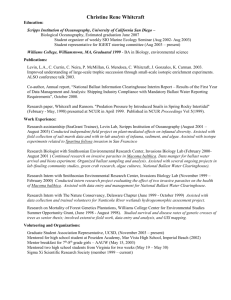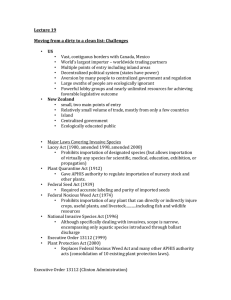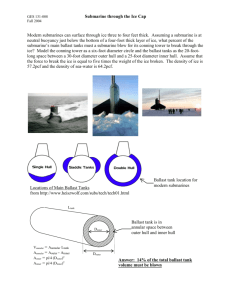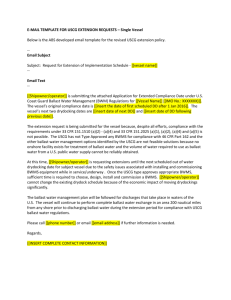The Shipping Federation of Canada
advertisement
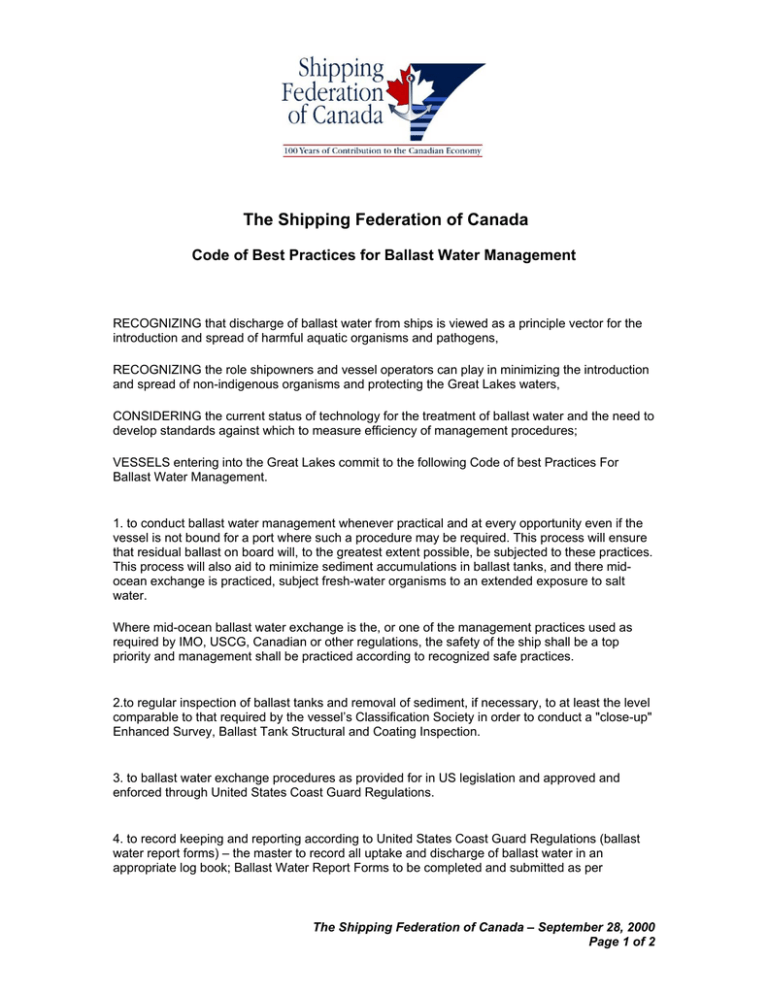
The Shipping Federation of Canada Code of Best Practices for Ballast Water Management RECOGNIZING that discharge of ballast water from ships is viewed as a principle vector for the introduction and spread of harmful aquatic organisms and pathogens, RECOGNIZING the role shipowners and vessel operators can play in minimizing the introduction and spread of non-indigenous organisms and protecting the Great Lakes waters, CONSIDERING the current status of technology for the treatment of ballast water and the need to develop standards against which to measure efficiency of management procedures; VESSELS entering into the Great Lakes commit to the following Code of best Practices For Ballast Water Management. 1. to conduct ballast water management whenever practical and at every opportunity even if the vessel is not bound for a port where such a procedure may be required. This process will ensure that residual ballast on board will, to the greatest extent possible, be subjected to these practices. This process will also aid to minimize sediment accumulations in ballast tanks, and there midocean exchange is practiced, subject fresh-water organisms to an extended exposure to salt water. Where mid-ocean ballast water exchange is the, or one of the management practices used as required by IMO, USCG, Canadian or other regulations, the safety of the ship shall be a top priority and management shall be practiced according to recognized safe practices. 2.to regular inspection of ballast tanks and removal of sediment, if necessary, to at least the level comparable to that required by the vessel’s Classification Society in order to conduct a "close-up" Enhanced Survey, Ballast Tank Structural and Coating Inspection. 3. to ballast water exchange procedures as provided for in US legislation and approved and enforced through United States Coast Guard Regulations. 4. to record keeping and reporting according to United States Coast Guard Regulations (ballast water report forms) – the master to record all uptake and discharge of ballast water in an appropriate log book; Ballast Water Report Forms to be completed and submitted as per The Shipping Federation of Canada – September 28, 2000 Page 1 of 2 Regulations; inspection and cleaning of ballast tanks to be recorded and records to be made available to inspectors upon request. 5. to provide information and logs to authorized inspectors and regulators for the purposes of verifying the vessel’s compliance with this Code of Best Practices. 6. to apply a precautionary approach in the uptake of ballast water by minimizing ballasting operations under the following conditions: a. In areas identified in connection with toxic algal blooms, outbreaks of known populations of harmful aquatic organisms and pathogens, sewage outfalls and dredging activity. b. In darkness, when bottom dwelling organisms may rise in the water column. c. In very shallow water. d. Where a ship’s propellers may stir up sediment. e. In areas with naturally high levels of suspended sediments, e.g. river mouths, and delta areas, or in locations that have been affected significantly by soil erosion from inland drainage. f. In areas where harmful aquatic organisms or pathogens are known to occur. 7. to the disposal of accumulated sediments as provided for in the existing IMO Ballast Water Protocols during ocean passages outside International Ballast Water Management Areas or as otherwise approved by Port State Authorities. 8. to foster and support scientific research sampling programs and analysis – Facilitate access to on board sampling and testing of ballast water and sediment including opening of ballast tank covers and safe access to ballast tanks following safety procedures for entering enclosed spaces. Sampling, testing and inspection to be planned and coordinated to fit within vessels’ operational program and minimize any delays. 9. to cooperate and participate in standards development and treatment systems testing and approval processes, including, but not limited to mechanical management and treatment systems, and pesticide management systems as well as improved techniques for ballast water exchange and their scientific assessment. 10. to strive toward global, integrated ballast water management strategies in conformity with internationally agreed principles that respect national and regional aquatic ecosystems. This Code of Best Practices is endorsed by the undersigned and represents our common goal to attain the highest standards of safe ballast water management to minimize the introduction and spread of aquatic nuisance species in the Great Lakes. The Shipping Federation of Canada – September 28, 2000 Page 2 of 2


